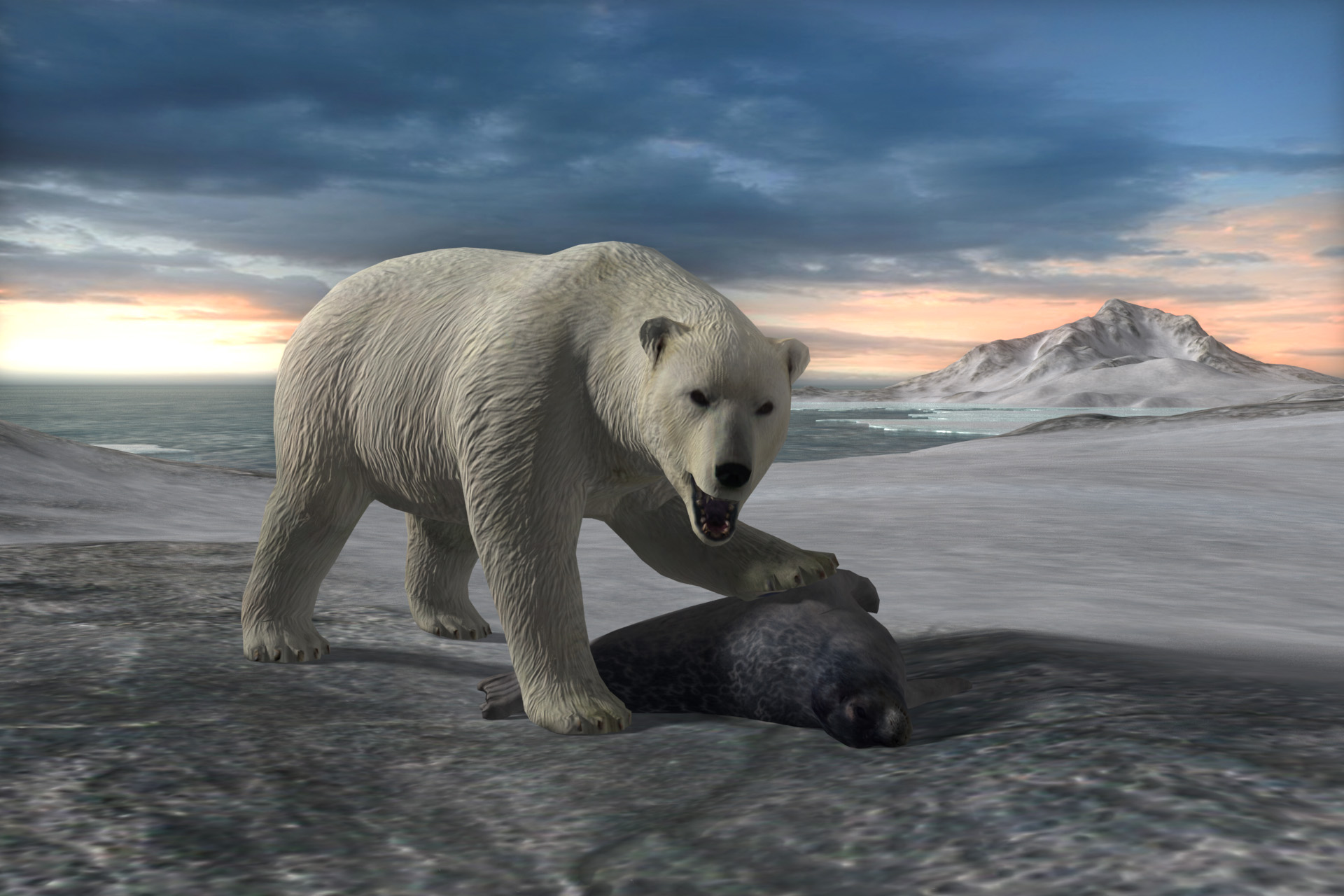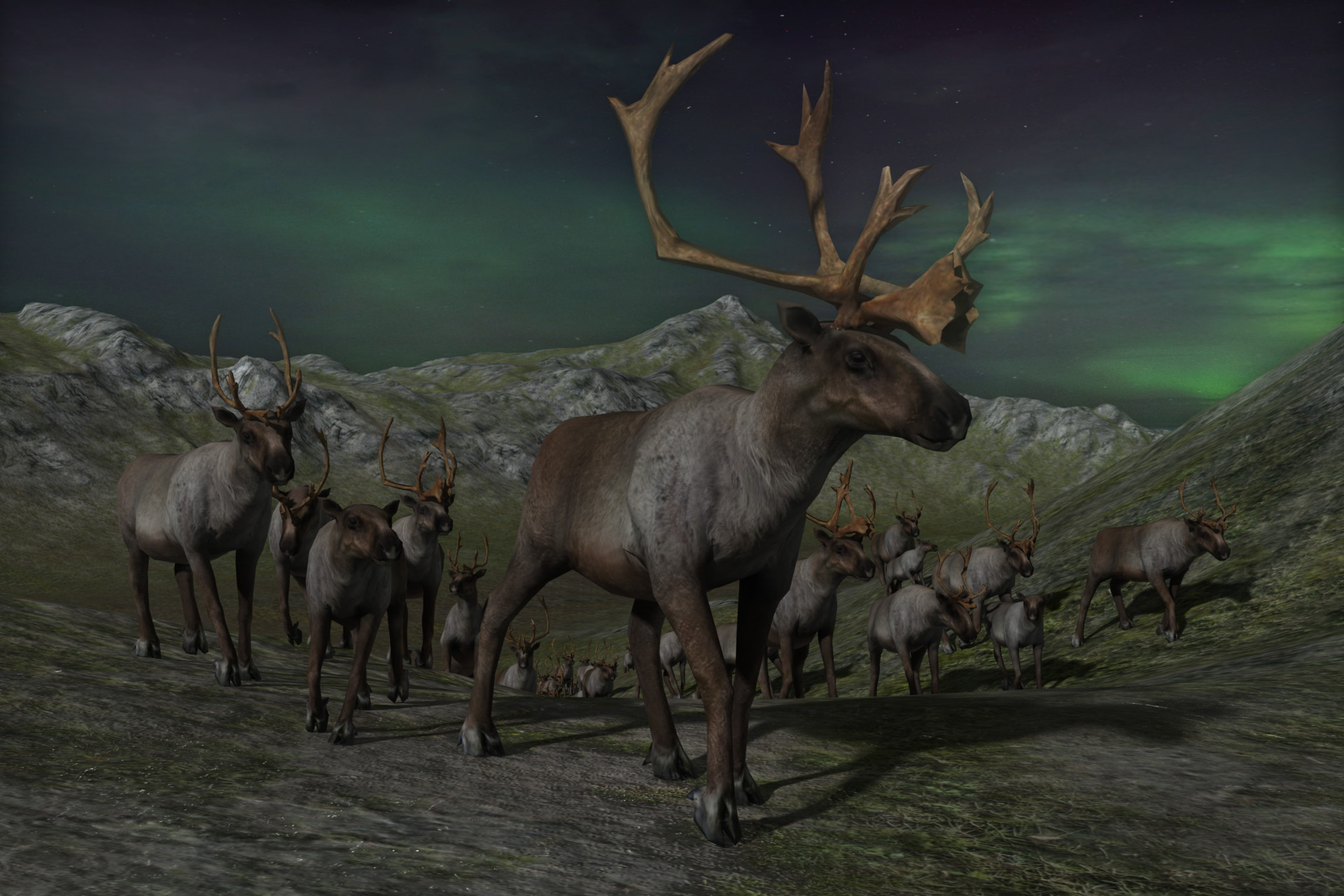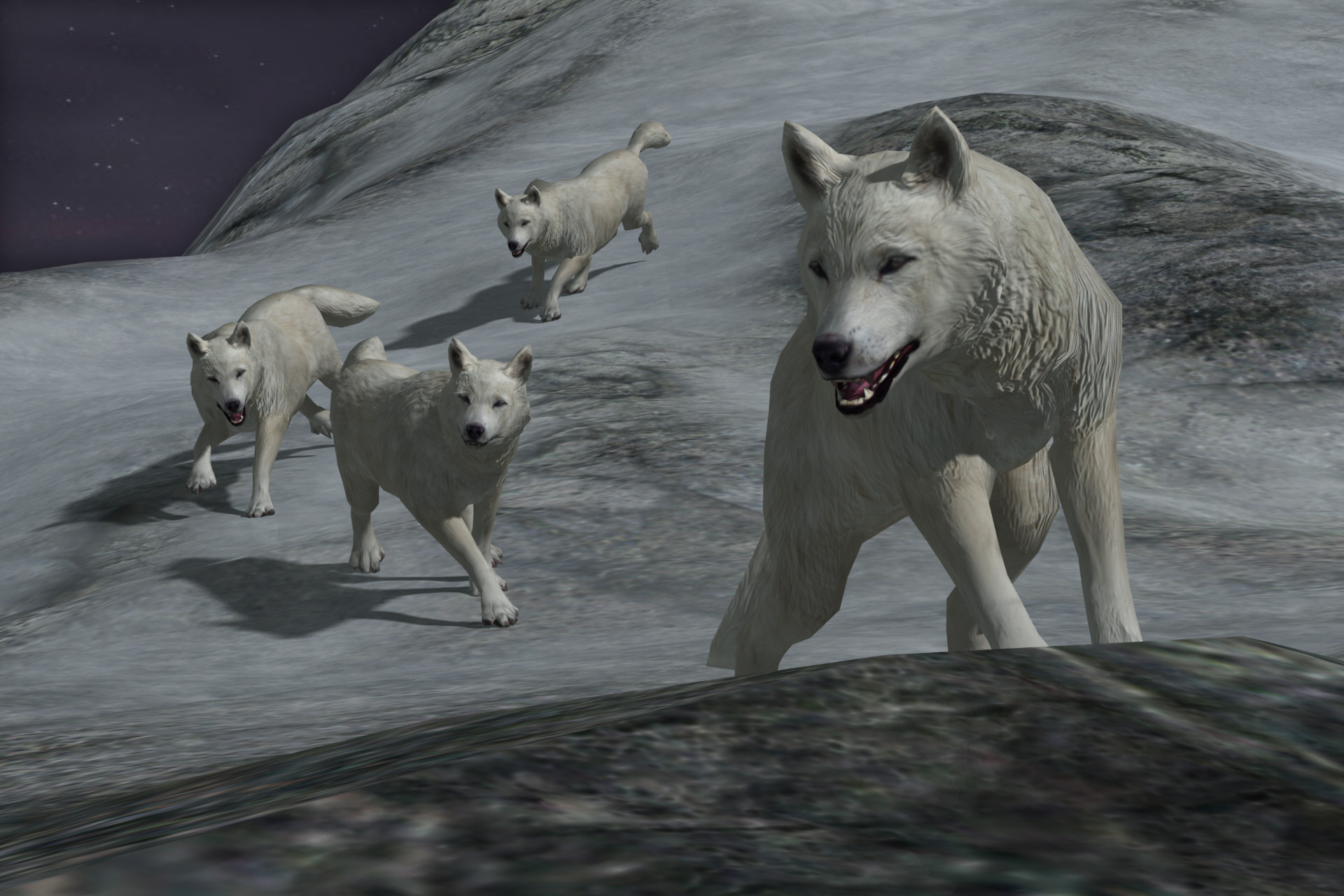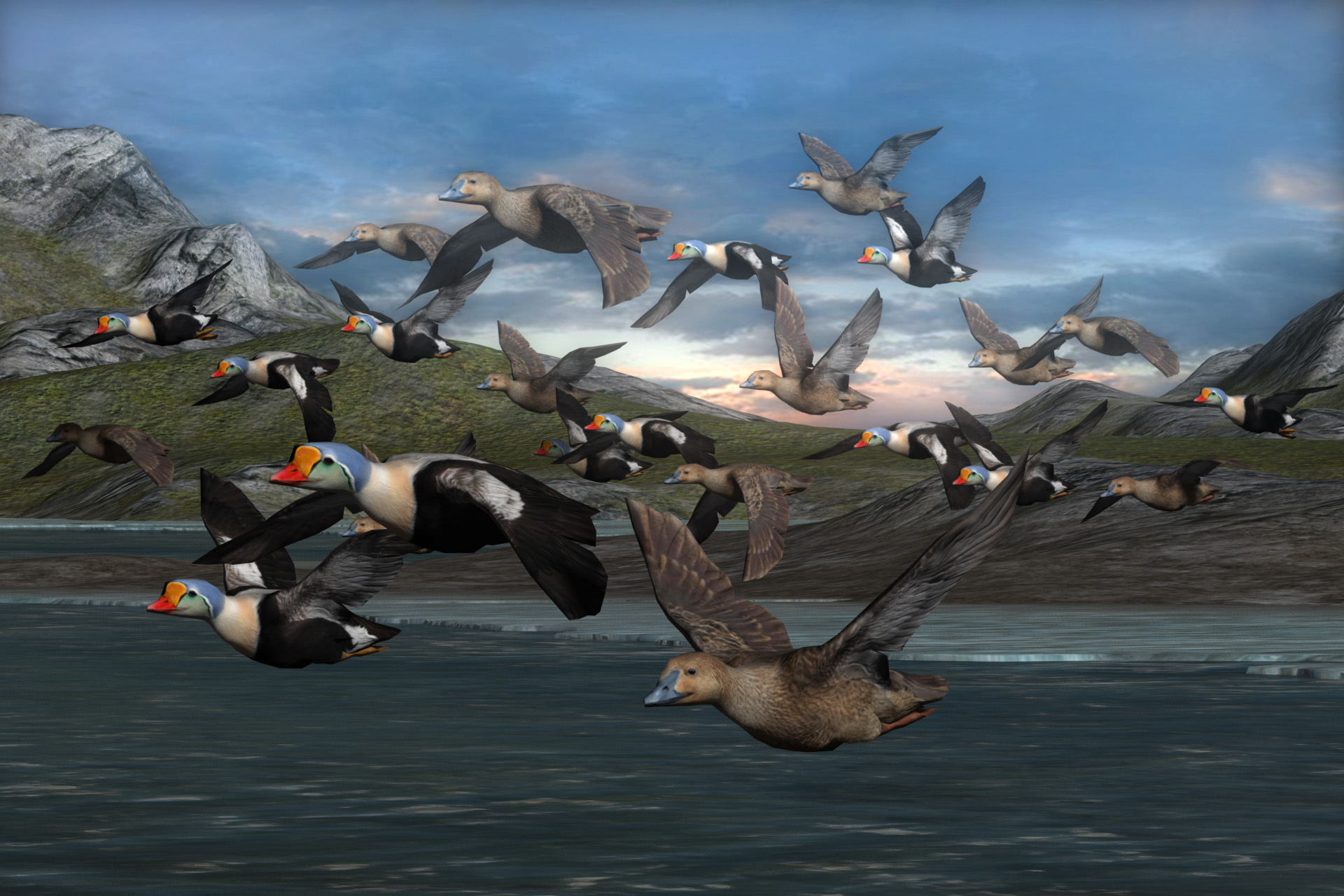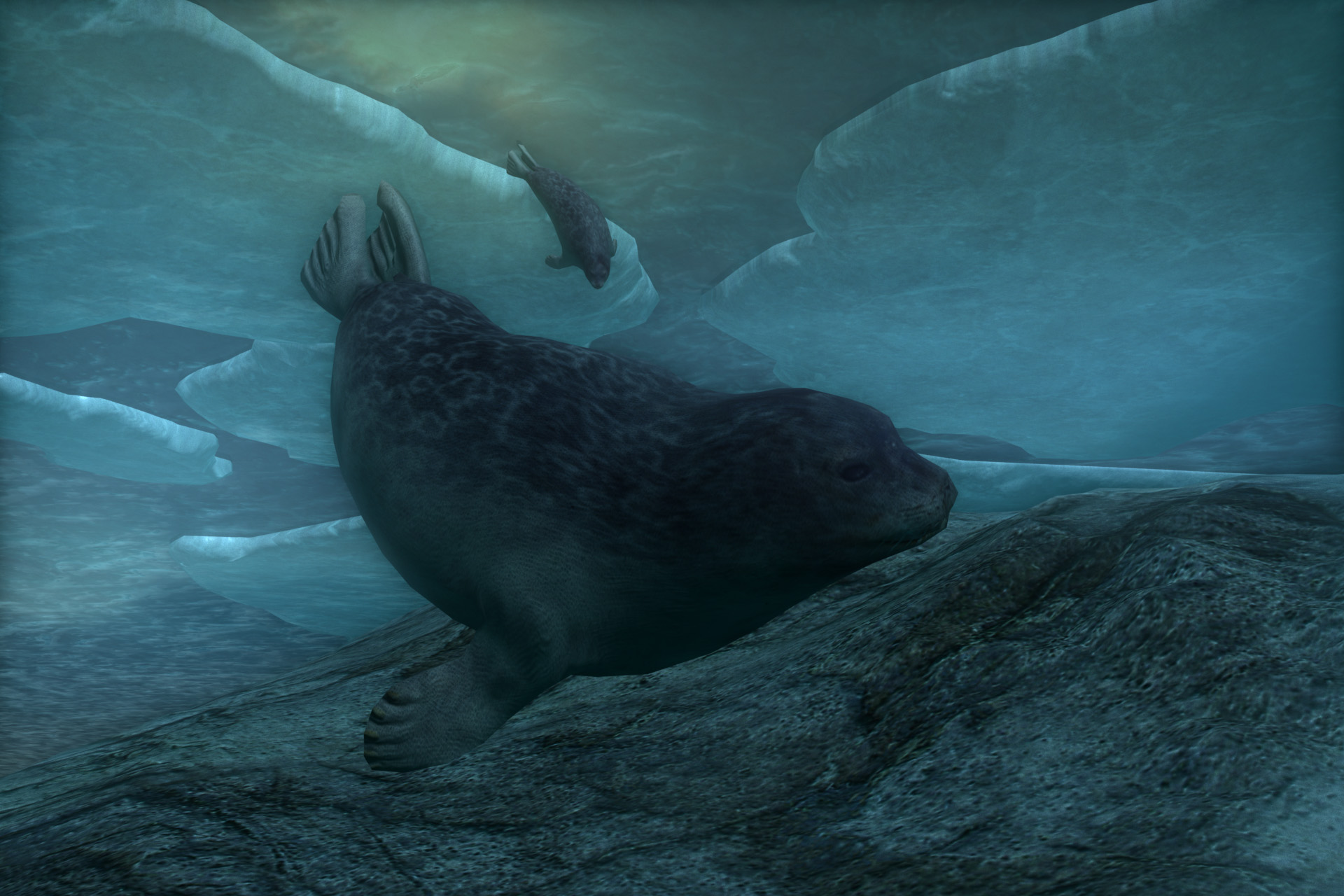



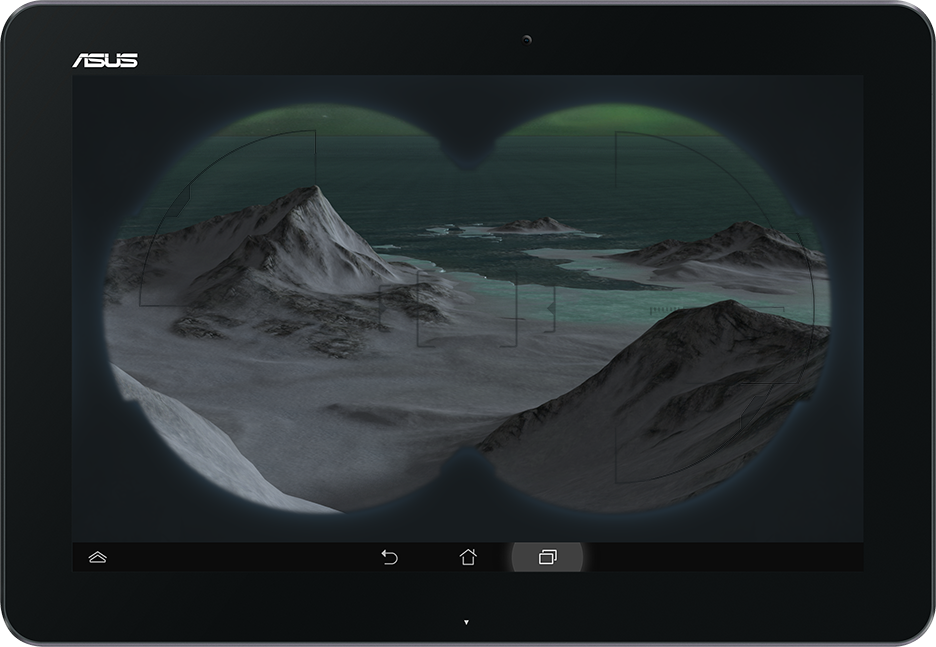

An educational game for elementary school students, Arctic Stars transports players to far north Alaska. Built in cooperation with Moutainview Elementary and the Benedum Foundation for the ASUS Transformer Pad, it leverages the interactivity to enhance engagement and improve instruction. We set out to create an immersive experience, allowing children to feel as though they were encountering the biome firsthand. Our commitment to realism and authenticity placed a heavy burden on art and animation.
My biggest challenge on this project was producing character and environment art in parallel, alternating focus as needed to keep the pipeline flowing as smoothly as possible. While the sparse landscape made this process more forgiving, the climate posed a significant problem from a production and performance standpoint in that all of the animals are covered in fur. Given our platform constraints, the ability to render fur in real time would be severely limited. Specialized shaders were out of question, and the team that preceded us on the platform advised against transparent textures. But the remaining option would work for all arctic species except the musk oxen, which has the longest hair of any mammal.
All of these intricate details - every tooth, claw, and clump of fur - had to be manually sculpted in Mudbox. There was no time in the schedule for developing resources to ease or expedite this process, so I had to dive in and find an uncomplicated but flexible workflow. The method I used was to sculpt fur onto the base model in several layers, with one to establish the grain of the hair, another to add variation and depth, and another to elucidate the underlying musculature. This high fidelity geometry was extracted to low poly meshes, ranging from 500 to 2500 tris and optimized according to the size of a species and its population density.
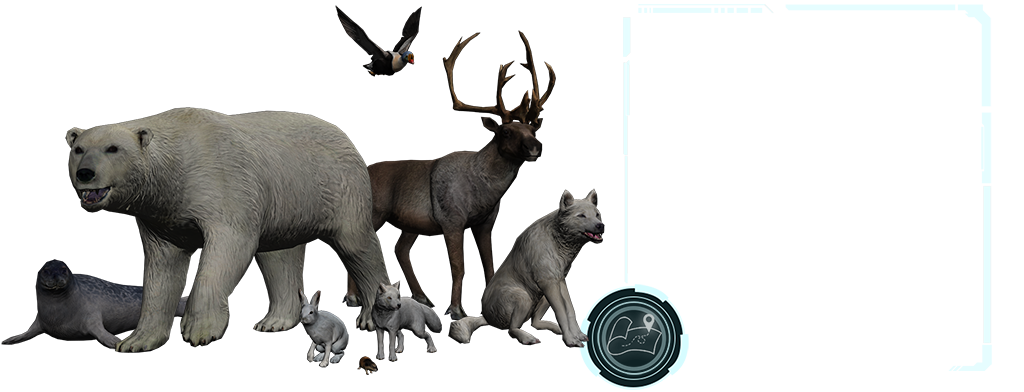

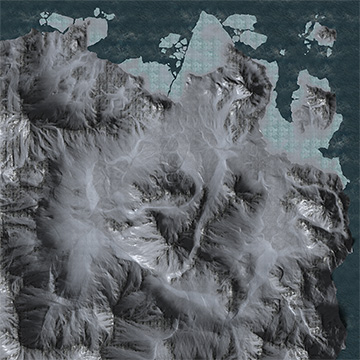
Once the marquee mammals of caribou, wolf, and polar bear were completed, I shifted focus to the environment. Based on a particular region in Alaska, every version of the environment had the same basic layout with highlands to the south and coastline in the north. My first iteration of the terrain was 500m2 with features roughly to scale. This made for a wide open expanse with few discernible landmarks. Even if you traversed the full width of the map, it hardly felt as though you had gone anywhere. There wasn't great incentive to explore when you could see the majority of the landscape from almost every point. The logical next step was expanding to a full square kilometer and adding more terrain features.
Using a combination of algorithmic terrain generation in World Machine and hand sculpting in Mudbox, I built an environment that would be more interesting, but still conveyed the vast expanse of an arctic landscape. Again, we encountered issues of boredom, since this proved to be more space than we could sufficiently populate and more than anyone was willing to traverse on foot. The solution was simple - reducing its dimensions by half made it more fun and more manageable, without compromising the sense of scale we were trying to convey. Although this landscape was the same size as in our first prototype, and the playable area is slightly smaller, its increased segmentation and more prominent terrain features made it feel as though there was much more to explore.
It was critical to our overarching objective to satisfy this desire to explore and instill a sense of wonder for the natural world. In order to effectively engage students, we had to offer them freedom. Without moving faster or slower, you can change the pace of a classroom experience simply by freeing it from the imposed cadence of traditional instruction. While this sort of game is not an up-tempo experience, it allows students to follow their curiosity in any direction.


